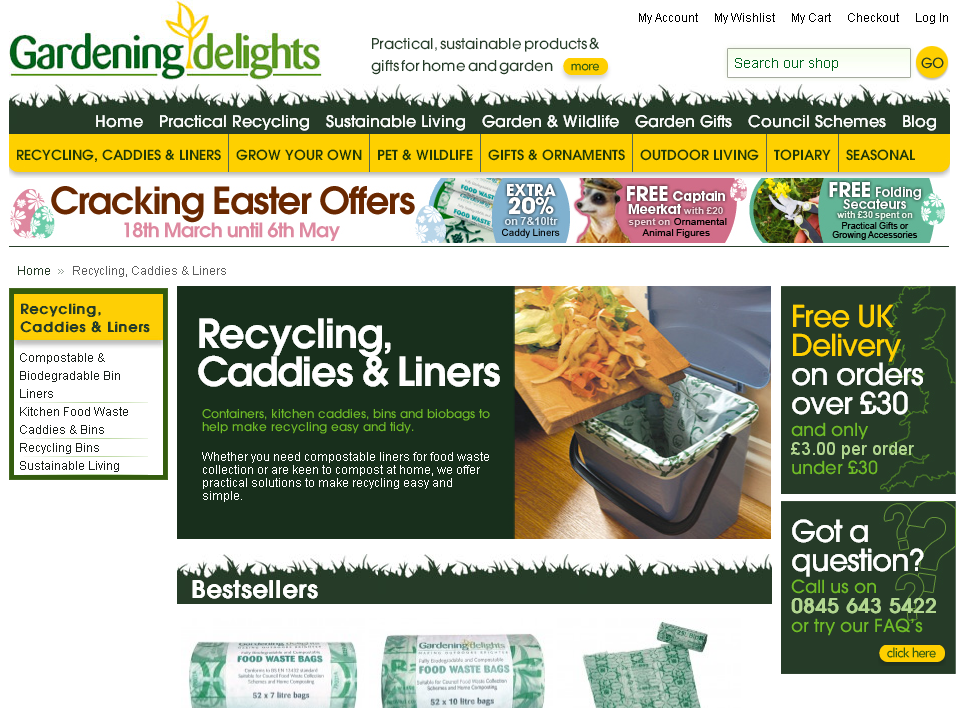

The phrase “good, unique content” has become a bit of a buzz phrase in recent years. So we can’t help but agree with Moz’s Rand Fishkin when he says that “good, unique content” needs to die.
In an episode of Whiteboard Friday posted on May 22nd 2015, Moz founder Fishkin says we should be aiming to produce content which is better than just good. And he’s got an excellent point.
Instead of producing “good, unique content”. Which frankly anyone can do without a huge amount of effort. Businesses should be aiming to produce the best content in the search results when they create something.
Before we go any further, here’s what you’re going to learn in this blog post:
- The qualities of the best piece of content in the search results
- The benefits of producing the best, most useful content, for your audience
- How you can create that kind of content – from the planning stage, to writing your headline, to promotion
You can also download this blog post as a PDF to keep handy, or to read later on.
What exactly is the best piece of content in the search results?
Think about the last time you searched for something. What was your experience like? Did you have to visit a few different websites before you found what you were looking for? Were you left with unanswered questions? That’s kind of annoying isn’t it?
Or did you find a standout piece of content that answered all of your questions? That content right there, is what you should be aiming to create.
The best, and most useful content is:
- Content that provides the reader with everything they need to know about the question or topic it’s covering
- So strong that the reader doesn’t need to look at another website
- So good that they consider bookmarking it, sharing it with their friends, or linking to it
How do I produce this amazing, incredible piece of content?
The key is to plan, to be aware of what’s already out there, and identify gaps in the existing coverage.
It might take longer for you to produce this kind of content, but the benefits are worth it:
- Your website gains more visits, and new visitors, which can lead to an increase in sales and leads
- Improving your search rankings, which can lead to an increase in sales and leads
- Expanding your reach as a result of shares, and improved search rankings
- Become seen as an authority and useful resource in your sector
- Improving your audience’s perception of your business / products / services
- Showing that you care about helping your potential and existing customers
Planning & research
Who is the target audience? What phrases are you targeting?
Before you begin, you need to identify who is the target audience of this piece. Are they people who are new to the subject and might need lots of basic information? Or are they experienced people, who already know a lot about what you’re writing about?
Knowing this will help you understand exactly what the reader needs to know, and the tone of voice you need to use.
You also need to know what search terms or phrases you want to be ranking well for. There are a few ways you can identify this:
- Think about what you would search for if you were looking for the piece of content you are going to create
- View your Google Webmaster Tools to look at the kind of words and phrases your audience are already using to reach your website
- Carry out a few searches and see what kind of results come up
- Try using the Google Keyword Planner
What’s missing from existing content that is ranking well?
If you’re knowledgeable about the topic you’re writing about, you can create good content fairly easily without too much research.
To create a piece of content which is the best in search rankings, you need to know what search phrases you will be targeting, and what content is already ranking well for that phrase.
Spend some time reviewing that content critically, and make a list of any questions it left you with, or would lead your target audience with, and any points that were missed out that you would have included.
You might also be able to identify a better way to get the information across to the reader.
For example, you might feel that sharing the information in the form of a video would be more useful, and easier for your audience to understand.
Also, take the time to review any comments left at the end of those pieces of content. Are people unclear about what is being said? Is there something left unanswered? Or has something been missed out?
Writing
Plan a little more
The planning isn’t quite done with yet.
Collate all of your research and thoughts into your working document, and remind yourself again what the purpose of this piece of content is for the reader. You can then begin planning your blog post:
- What images or videos will you need? Who needs to create those, and when?
- Do you need to create a downloadable PDF or eBook to go with it?
- What pages / videos do you need to link out to?
- What will be your call to action at the end of the piece?
You can now start writing
With all of your research in hand, and a detailed idea about the kind of content you’re going to produce, what it’s going to say, and help readers with, you can begin writing.
Some tips to keep in mind:
- Keep paragraphs short to make it easier for people to read
- Don’t bombard people with jargon
- Cut the waffling – make sure every word and sentence is necessary, remove anything that doesn’t add anything
- Break up sections with sub-headings
- Use bullet points
- Add images and videos where necessary
- Link out to studies, articles, blog posts, videos you reference
Creating a solid headline
Getting your headline right is incredibly important, as it will be the first thing most people see. It needs to be strong enough to grab their interest in search engines, or on social media, and make them click through.
Things you need to consider when writing a strong headline:
- Length – if your headline is much longer than 70 characters it will get cut off in search results
- Where the most important words are – sometimes a headline longer than 70 characters is necessary, so make sure the first part grabs their attention.
- Does it evoke positive or negative emotions? Is that the emotion you were going for?
- Does it accurately tell people what they will find out if they click through?
- Ensure it includes some of your key words / phrases you want to rank for
- Is it interesting?
- Does it make you want to click through?
You don’t have to try and figure all of this out on your own though. CoSchedule have a great, free tool called Headline Analyzer, which scores your headlines based on length, sentiment, the headline type, and more.
We also recommend using Upworthy’s method of writing at least 25 headlines for each post, because it forces you to really think hard, and dedicate the time needed to write a solid headline.
If you use that method with the Headline Analyzer, you’re well on your way to understanding what a strong headline should be, and improving your own headline-writing skills. (Every day is a school day!)
Ask someone to proofread it
Leaving your piece and coming back to it later is a great way to spot any mistakes, or things you’ve missed out, but you can’t beat asking someone else to check it. Especially if you can find someone similar to your target audience, as they may raise points your audience would raise.
Provide a good user experience
When people arrive at a website, they have certain expectations, so make sure that both your website, and your blog post meet those expectations.
This means:
- Your website needs to be mobile-friendly
- Your website needs to load quickly
- Your blog post should be formatted well, with images and sub-headings to break up big chunks of copy
- Your website should be easy to navigate
- You need a strong call to action if you want the reader to do something after reading your content
Promote it
After you’ve poured so much time and effort into your fantastic piece of content, you need to promote it. You need to find your target audience and tell them where they can find this content that is going to help them.
Exactly where and how you promote it will largely depend on your target audience, but here are a few options:
- Email marketing
- YouTube
If you need help with finding out which social networks your audience use, read How To Create A Social Media Strategy That Works.
A trap many businesses fall into when promoting their own content is not promoting it enough. We’re not saying spam your audience with 50 updates about it a day, but remember that there are a lot of reasons why someone might not see your content the first time you promote it:
- They didn’t scroll down far enough and never see it
- It gets lost amongst all of the other updates
- They fall into the big chunk of your audience who Facebook won’t show your updates do without paying
- They do see it, tell themselves they’ll read it later, but forget about it
Don’t be shy when it comes to promoting your own content. The 80/20 method is recommended, where 20% of your updates are self-promotion, while 80% is having conversations, and sharing other people’s content.
Summary
Creating truly high-quality content is not a magic SEO bullet, but it can help you perform well for key words and key phrases you want to target. There are still other SEO things you should be taking seriously, such as your website’s load speed, usability, dodgy backlinks you built six years ago, etc.
The most important thing is to realise and understand that you’re writing content for a specific set of people, rather than a search engine.
Even if you are blogging primarily to improve your search results, you need to put your audience first and consider what questions and concerns they have, and how you can help them. If you put your audience first and create content which is genuinely helpful for them, your success in search rankings will follow.
Struggling with blogging for your business? Call us on 01543 387 047 to find out how we can help you get the best out of your blog, or manage it for you.








